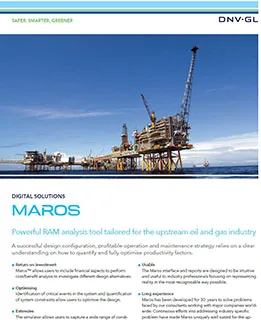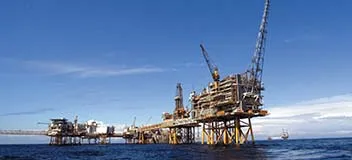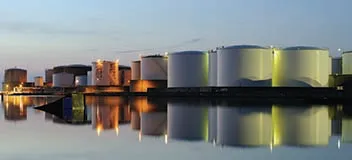Flaring operations produce a major source of damaging gases for the environment such as methane and carbon dioxide (CO2). By using advanced analysis methods and optimizing production, oil and gas companies can take steps to limit harmful flaring.
Reducing flared and vented gas with new technology
Currently, five per cent of world annual gas production is being flared or vented, says Martin Layfield, Gas Segment Leader at DNV. “The World Bank estimates that is equivalent to about 110 to 140 billion cubic metres (bcm) of gas. It equates to the combined gas consumption of Central and South America in 2013,” he says. Mr Layfield published a recent article on DNV’s partner zone in The Guardian where he discusses a number of technology solutions to reduce flared and vented gas, primarily through natural gas capture so as to then utilize the valuable resource. In addition to the methods described in The Guardian's article, reliability, availability and maintainability (RAM) analysis can also be used to optimize and reduce flared gas operations.
Flaring operations are commonly seen at oil and gas production and processing units, and the reasons behind flaring vary. Flaring is often triggered by interruptions in the systems that produce or treat gases that need to be re-routed and disposed of in a safe and controlled manner. However, in some countries, flaring operations are used as a means of simply bypassing failures in the gas-related systems in order to maintain oil production. Sometimes producers simply disperse the gas to the atmosphere, which is even more environmentally harmful than flaring as per unit mass methane contributes more to the greenhouse effect than carbon dioxide (one of the products of burning the gas).
Reduction of gas emissions can be achieved by reducing the number of unplanned interruptions, resulting in less burned gas. In addition, as mentioned earlier, new technologies can be used to monetize the gas which would otherwise have been flared or vented.
Using RAM analysis to improve performance
How does one estimate and reduce unplanned interruptions? How does one assure economic viability for the implementation of a new technology?
RAM analysis is a methodology able to answer both questions. This statistical methodology is used to predict the performance of assets. ’Reliability’ means the number of failures, ‘availability’ is the system’s uptime, while ‘maintainability’ refers to the duration of repairs.
The computer program simulates a number of lives of the oil and gas production system, tracking how many failure events happen. The program’s simulation includes the duration of repair tasks and from this determines how efficiently the overall system will run. By simulating many lives, based on historical records of system performance, it is possible to predict how an oil and gas production system is likely to behave.
RAM technology is used in lots of industries such as transport, nuclear energy and electronics. The oil and gas industry uses a hybrid version of RAM analysis, which incorporates flow modelling capabilities. Instead of focusing on the uptime, they focus on the actual quantity of oil and gas produced. This enables the assessment of economic feasibility of technological innovations.
Maros software leading in RAM
Maros, DNV’s RAM software solution for the oil and gas industry has been using and developing this methodology for over 35 years now.
Upon completion of a Maros study, the analyst gets a complete picture of the performance including production rates of oil, gas and water, the critical systems and equipment leading to the major losses as well as the effectiveness of the maintenance strategy.
Supplied with this information, optimisation and reduction of downtime can be easily performed by running sensitivity analyses. So, if the analyst is looking at alternatives to reduce the number of interruptions, this can be easily performed.
Monetizing flared or vented gas
Finally, suggestions in regards to design configuration, different maintenance strategies and de-bottlenecking of the asset are defined, taking into account implementation cost and return on investment (ROI). If the analyst is looking at new technologies to monetize flared or vented gas, the return on investment can be easily measured and compared.
In addition to the typical results, Maros will also report the quantity of gas flared, the number of stops due to environmental restrictions (regions around the world limit the potential amount of gas to be flared) and the gas production. The analyst can change and try different parameters and engineering solutions to minimize the environmental impact.
RAM analysis and flow modelling allows oil and gas producers to find more cost-effective alternatives in order to minimize emissions.
At DNV we are committed to help qualify new technologies and help operators realize the potential of natural gas capture and also reduce flaring in day-to-day operations through improved analytics and decision-making.



